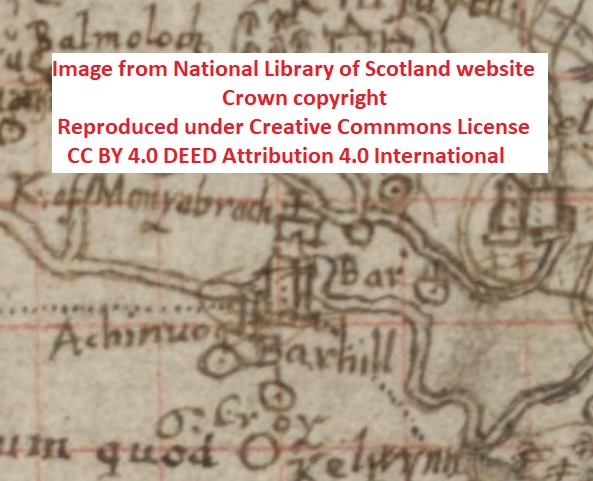Auchinvole Castle

Auchinvole Castle Details
Auchinvole Castle, site of C16 tower of the Starks substantially extended to C19. Abandoned mid C20 and demolished
- Closest To: Kilsyth, Cumbernauld, Kirkintilloch
- Access: S.O.A.C. Public Access
- Grid Reference: NS714769
Auchinvole Castle was a predominantly 19th century baronial mansion, with an older tower house largely hidden within. It lay to the south-west of Kilsyth, with a small steading range incorporating a doocot to the south-east of the mansion. It was partly demolished in 1965 and the remainder removed in 1977, although parts of the steading wall and the doocot survive. Immediately to the north of the site is a canalised section of the River Kelvin, with a public footpath behind – but it is not possible to see the site from public paths, and the site of the building has been built over with a large prefabricated shed belonging to an aggregates yard.
The tower house was built in the 16th century, and is shown on Pont’s map of the east central lowlands as the tower of “Auchinvoal” which was a fairly standard L-plan tower of three storeys and a wing, with a walled courtyard. It had already been much extended and altered by the time MacGibbon and Ross published their work, and in V3 is a depiction of “the old part” which confirms that there was a small L-plan tower, with a corner turret on the front corner of the main block, and another unusually placed upon the caphouse of the stair wing. This seems to have been to the rear of the mansion, on the eastern side. An early sketch shows that a further block extended from the south-eastern corner, and the suggestion is of a courtyard, and this certainy seems to have preceded the production of the squarish mansion shown in early photographs.
Auchinvole was most likely built for the Stark family of Auchinstarry, who were in possession of the lands by 1575 as the result of John Stark’s marriage to one of the heiress daughters of Thomas Fleming, who held the barony of Lenzie that it was part of. John was followed by his youngest son James in 1629, and then three more Johns, the last of whom was active in the Jacobite period. A series of legal papers relating to debts upon the estate survive for the period 1711-1720, and it seems that it was sold at auction on 18th November 1717. A family squabble involving the Blairs and Hamiltons who had bought the place followed, and was still ongoing in 1744, before it was finally purchased by William Wallace before 1769. In 1856, another William Wallace commissioned drawings for the extension of the buildings from the Glasgow architect James Smith, resulting in the mansion that survived for another century.
Become a supporter of my work to access a more detailed history